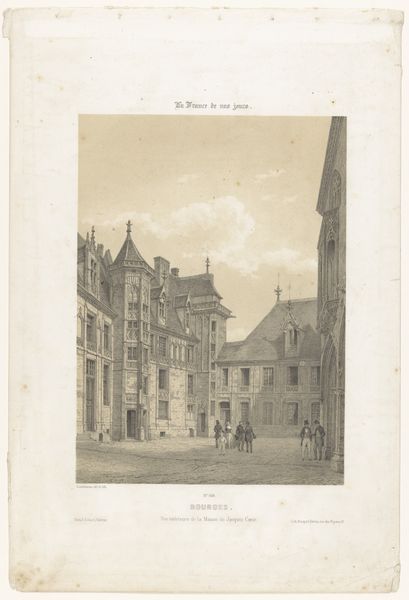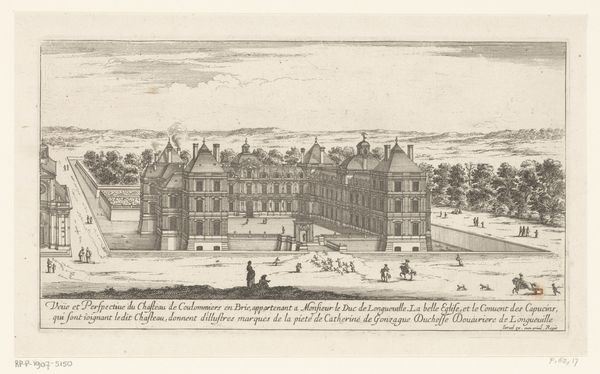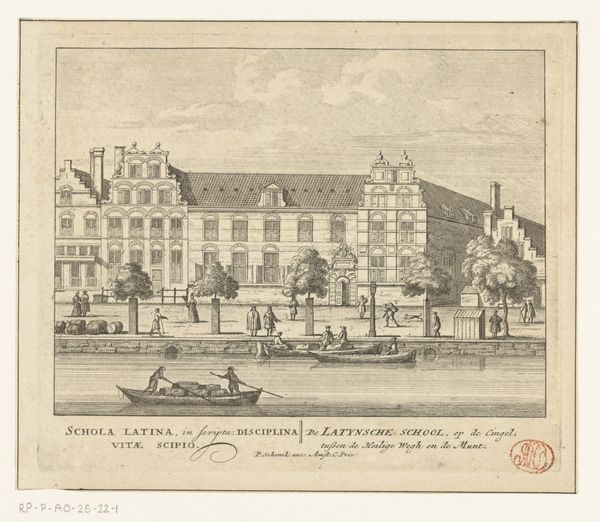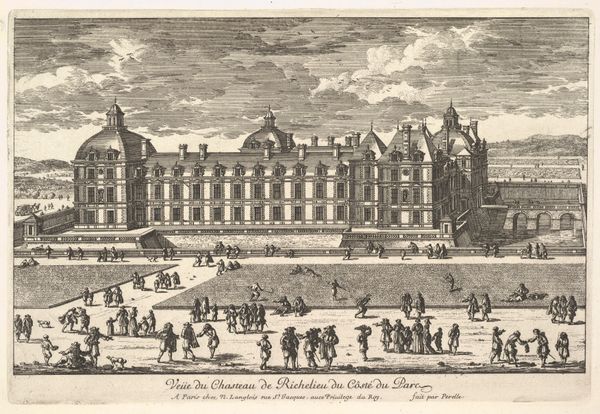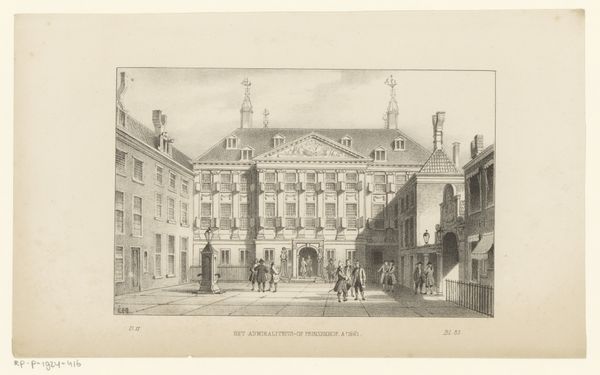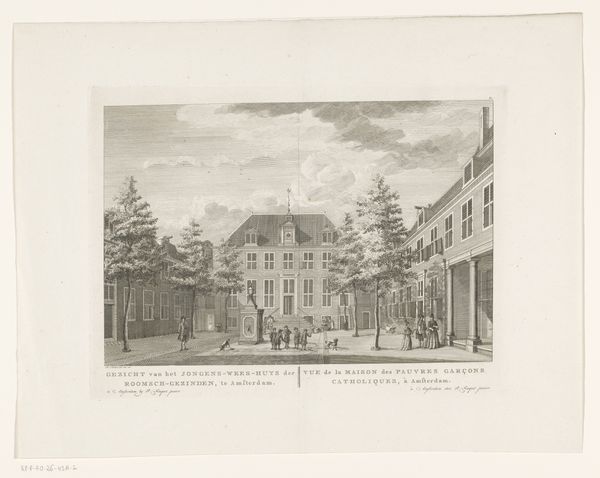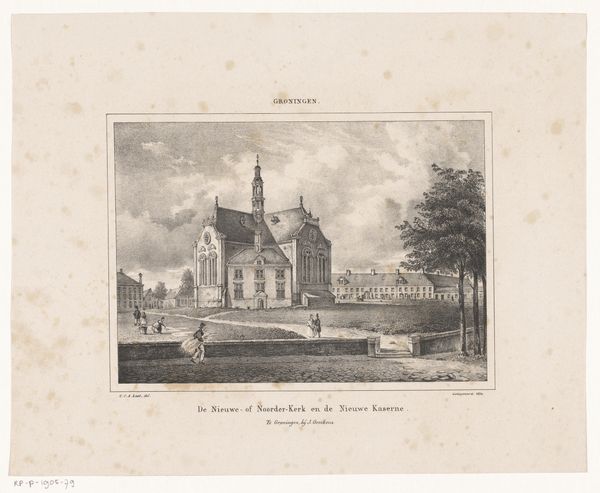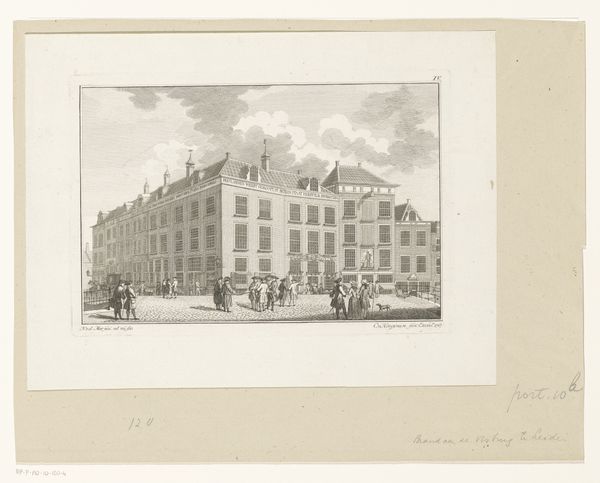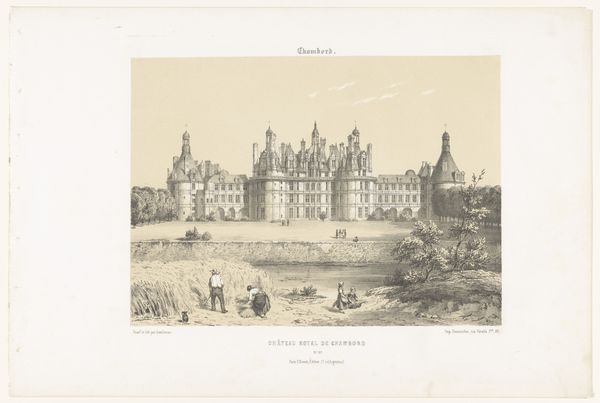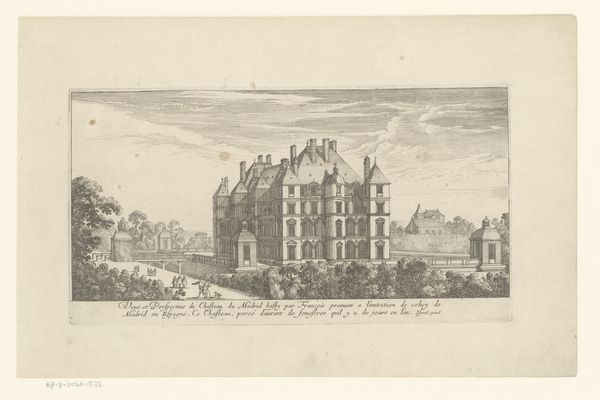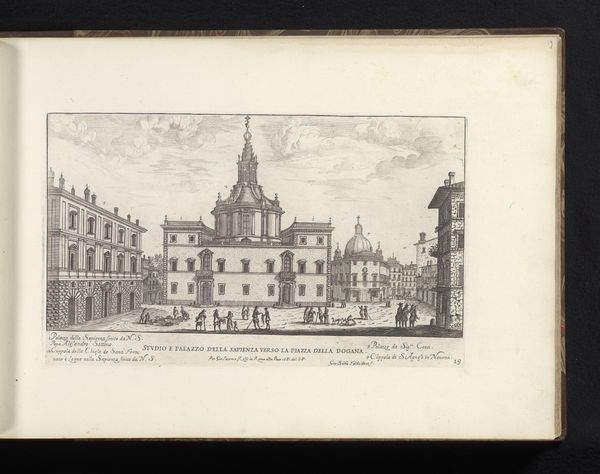
print, engraving
# print
#
cityscape
#
history-painting
#
engraving
#
realism
Dimensions: height 291 mm, width 434 mm
Copyright: Rijks Museum: Open Domain
Curator: Today we are looking at L\u00e9on Auguste Asselineau's "View of the Town Hall of Orl\u00e9ans", created between 1853 and 1856. It's a finely detailed engraving that captures the heart of this historic city. Editor: It's delicate, almost ethereal, isn’t it? The pale tones give it a sense of faded grandeur. The composition, very horizontal, really emphasizes the length and presence of the building. Curator: Absolutely. Asselineau made this work during a time when cities were centers of intense political and social change. The Town Hall itself stands as a symbol of civic power, and the presence of citizens suggests a connection between governance and the people. The engraving also reflects France’s increasing obsession with documentation and progress. Editor: And what about the realism here? Look how the light hits the building, the texture of the stone...it’s not romanticized in a painterly way, is it? The precision conveys a commitment to truthful rendering that aligns perfectly with its historical role. Curator: Indeed. Remember, realism in art served to legitimize contemporary subjects by treating them with the same seriousness previously reserved for historical or religious scenes. Depicting ordinary citizens and modern cityscapes asserted their significance within the national narrative. Editor: Still, I find it lacks warmth; perhaps this reflects a societal austerity? A sort of civic formality over individual expression? Even the small figures seem like architectural accents. Curator: I see your point. It is undoubtedly an emblem of institutional strength, and perhaps, intentionally minimizes signs of socio-political unease simmering beneath the Second Empire's seemingly calm surface. This print isn’t merely representational; it’s a constructed narrative about order, progress and stability, deliberately promoting that idea for a burgeoning nation. Editor: The longer I observe the architecture the more it stands as a monument to controlled beauty, expertly translated into delicate print—revealing power through perfect lines. Curator: I agree; Asselineau offers more than meets the eye. This artwork helps us examine mid-19th century ideals and envision our present within history’s continuum.
Comments
No comments
Be the first to comment and join the conversation on the ultimate creative platform.
